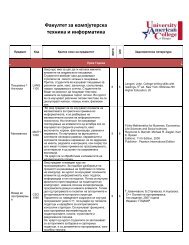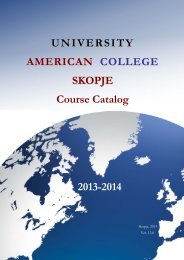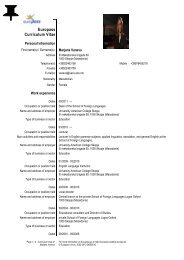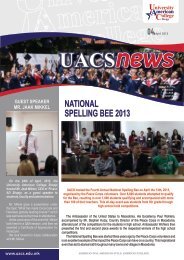UACS Collection of Abstracts 2011 - University American College ...
UACS Collection of Abstracts 2011 - University American College ...
UACS Collection of Abstracts 2011 - University American College ...
Create successful ePaper yourself
Turn your PDF publications into a flip-book with our unique Google optimized e-Paper software.
appearanceConference <strong>of</strong> paperappearanceTitle <strong>of</strong> the paperAbstractKeywordsJEL classificationGlobal Forum: Shaping the Future 2010, The George Washington<strong>University</strong>, Washington, DC, November 8‐9, 2010Brain‐Machine Interface ‐ A 21st Century Dynamic Technology:Anticipatory Brain Potentials And Robot ControlBrain‐Machine Interface is a technology that allows people to controldevices using only the bioelectrical signals from the brain. The challengehas been around since 1973, and the first experimental pro<strong>of</strong> <strong>of</strong> thefeasibility <strong>of</strong> the technology was given in 1988. However, the realworldwide interest was shown in the 21st century. Currently, there areresearch laboratories and companies around the world <strong>of</strong>fering researchand products in the area. The technology allows recognizing various states<strong>of</strong> the human brain through brain signal processing. The applications so farincluded movement <strong>of</strong> the cursor, hands‐free typewriter, wheelchair(robot) movement, and robot arm (prosthesis) movement, among others.Here, an investigation is reported, in which Brain‐Machine Interface is usedbased on anticipatory brain potentials. The device controlled is a roboticarm.Brain potentials taxonomy, Brain‐robot interface, Anticipatory potentials,Controlling robotic armAuthor(s)Journal <strong>of</strong> paperappearanceConference <strong>of</strong> paperappearanceTitle <strong>of</strong> the paperAbstractKeywordsJEL classificationAdrijan BožinovskiIN‐TECH <strong>2011</strong>, 01.‐04.09.<strong>2011</strong>Linear‐Time Binary Tree Generation Algorithms for Arbitrary Input StringReproduction upon Depth‐First TraversalThe paper presents algorithms for generation <strong>of</strong> binary trees that containcharacters <strong>of</strong> an arbitrarily input string, which is then reproduced when thetree is traversed in one <strong>of</strong> the three depth‐first tree traversal techniques:preorder, inorder, and postorder. Three algorithms are given, eachgenerating a special binary tree that reproduces the arbitrarily input stringwhen traversed in a specific technique.binary tree generation, algorithm, arbitrary input string reproduction,binary tree traversal, preorder, inorder, postorderAuthor(s)Journal <strong>of</strong> paperappearanceConference <strong>of</strong> paperZivkaMeloska, IlijanaPetrovska, Blagojco AnakievInternational Scientific Conference, Development Trends In Economics52


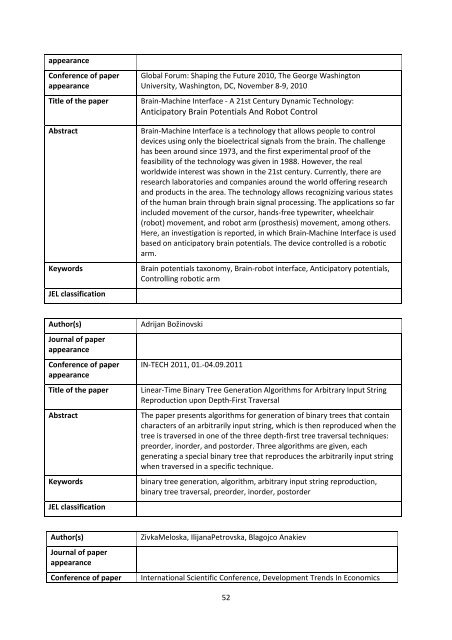
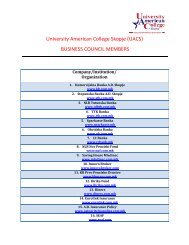

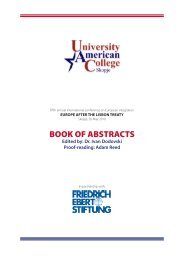

![amerikan kolex ]e bide prv univerzitet od treta generacija vo ...](https://img.yumpu.com/47278343/1/190x252/amerikan-kolex-e-bide-prv-univerzitet-od-treta-generacija-vo-.jpg?quality=85)

